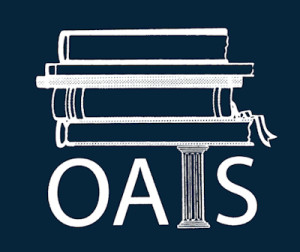When I took over at OAIS in 2011, transitioning from the world of being an elected official and coming into the world of education, one of the things I immediately noticed is the role of a head of school. Independent schools with lower, middle and upper schools often have division heads for each set of grades and the head of school wears many hats. In the meetings I have attended with boards and heads, I have always noticed the trust placed in the head by the board members. The head then places his/her trust in the school’s division heads and the relationships continue to flow to other staff members. The trust in those relationships stems from a faith in the professional decision-making of the individuals involved to do what is in the best interests of the students and the school.
When I look at the various positions taken on testing in private schools, a couple of things jump out. First, there seems to be little debate that students who are not on a tax-funded scholarship, or even a tax credit scholarship, should not have to take state-mandated standardized tests. Even in Ohio, that requirement does not manifest itself until the student reaches high school. Why Ohio continues to make this is a requirement is something that is worthy of discussion and hopefully change will come from that discussion.
Another thing that jumps out is the apparent chasm between those who disagree on the value of testing. In reading the
latest column by a host of authors on Nationalreview.com, the position taken is that there should be no standardized test requirement at all. Instead, there is a faith placed in the marketplace that it will correct the deficiencies of schools based on their testing or lack thereof. On the other side are folks from the Fordham Institute and others who believe that all scholarship students taking the same tests will produce “apples to apples” comparisons that will help people make informed choices. In fact, their solution includes testing non-scholarship students with the same tests as those on scholarship if the percentage of scholarship students is high enough.
There has to be a middle ground. For example, insisting that students on a special needs scholarship take the same standardized tests as public school students and EdChoice students makes no sense. It makes even less sense in schools like OAIS members Marburn Academy, Springer School and Lawrence School. These three schools specialize in the diagnosis and education of those with learning differences. Everything they do during the course of a day, including the diagnostic assessments they routinely use, is focused on figuring out what students know and don’t know and what methods work best for conveying content. Having these students take the OAA’s or PARCC assessments will be of no value in their work.
A middle ground also needs to include the judgment of administrators and professionals that run a successful school. The folks who run private schools may, for example, have preferences in using Terra Nova, Iowa or Stanford tests. I don’t know of many private schools in Ohio who do not administer at least one standardized test to their students. However, if a student is on a tax-funded scholarship, the judgment of that professional is either disregarded and the student takes the OAAs and not the other test or the student is double-tested, thereby missing more hours and days of actual learning.
Bill Parcells once said “They want you to cook the dinner; at least they ought to let you shop for some of the groceries.” If policymakers insist that a test must be administered and that the results must be made public, at least they ought to let administrators choose the test based on the judgments of those who are running the schools. Would this destroy the ability of “apples to apples” comparisons? Not really, since Ohio is already prepared to adjust the scores of those taking other tests authorized by statute for graduation requirements. Would this destroy the ability of the market to determine what schools are working best? Not really, since parents could choose a school based on what they think is appropriate for their child from a testing perspective.
The worst thing Ohio can do is overlook what works for parents and schools in order to promote a theory. Ohio’s testing policy needs to have more boots-on-the-ground practicality and less think-tank absolutism.
